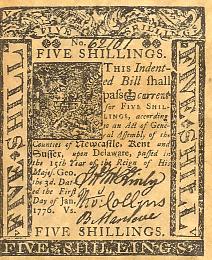
| Delaware |
| Colonial Currency |
Most of the Colonial notes were issued in shillings because, even though most transactions were in
Spanish dollars, the official account of exchange was in British units.
Odd denominations of the currency were often printed because of the lack of small change. To lower
costs, many bills were not printed on the reverse side. Each bill was usually numbered and signed
individually by hand to discourage counterfeiting.
During the Revolutionary War, the Continental Congress, in need of money, but unable to impose tax,
printed huge amounts of currency to finance the war. So much paper money caused the Continental
currency to rapidly depreciate; by 1781, the paper was exchangeable for coin at a rate of $225 in paper
for a $1 coin.
Spanish dollars, the official account of exchange was in British units.
Odd denominations of the currency were often printed because of the lack of small change. To lower
costs, many bills were not printed on the reverse side. Each bill was usually numbered and signed
individually by hand to discourage counterfeiting.
During the Revolutionary War, the Continental Congress, in need of money, but unable to impose tax,
printed huge amounts of currency to finance the war. So much paper money caused the Continental
currency to rapidly depreciate; by 1781, the paper was exchangeable for coin at a rate of $225 in paper
for a $1 coin.
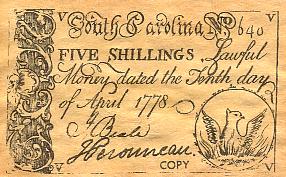
| South Carolina |
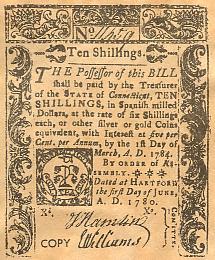
| Connecticut |
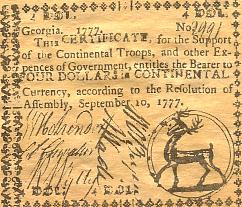
| Georgia |
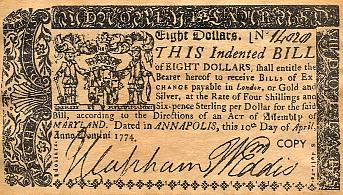
| Maryland |
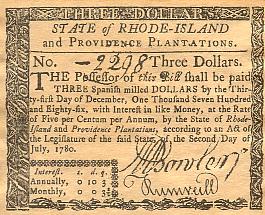
| Rhode Island |
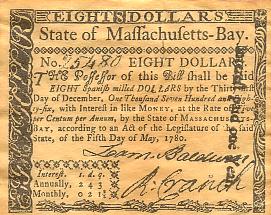
| Massachusetts |
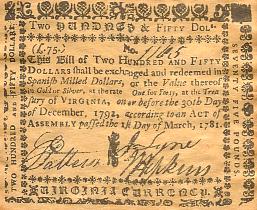
| Virginia |
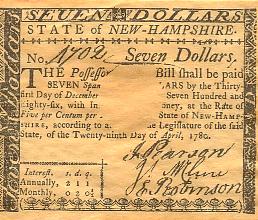
| New Hampshire |
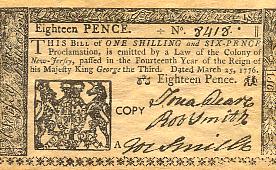
| New Jersey |
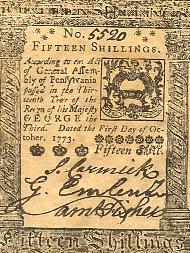
| Pennsylvania |
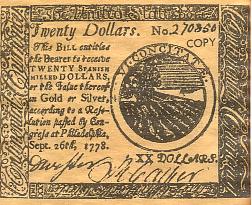
| Pennsylvania |
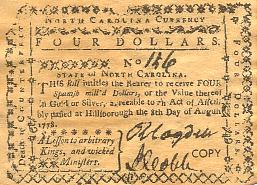
| North Carolina |
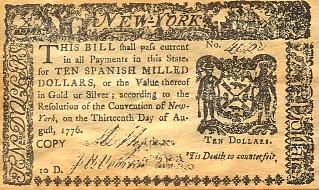
| New York |